GNZ Newsletter
November 2020
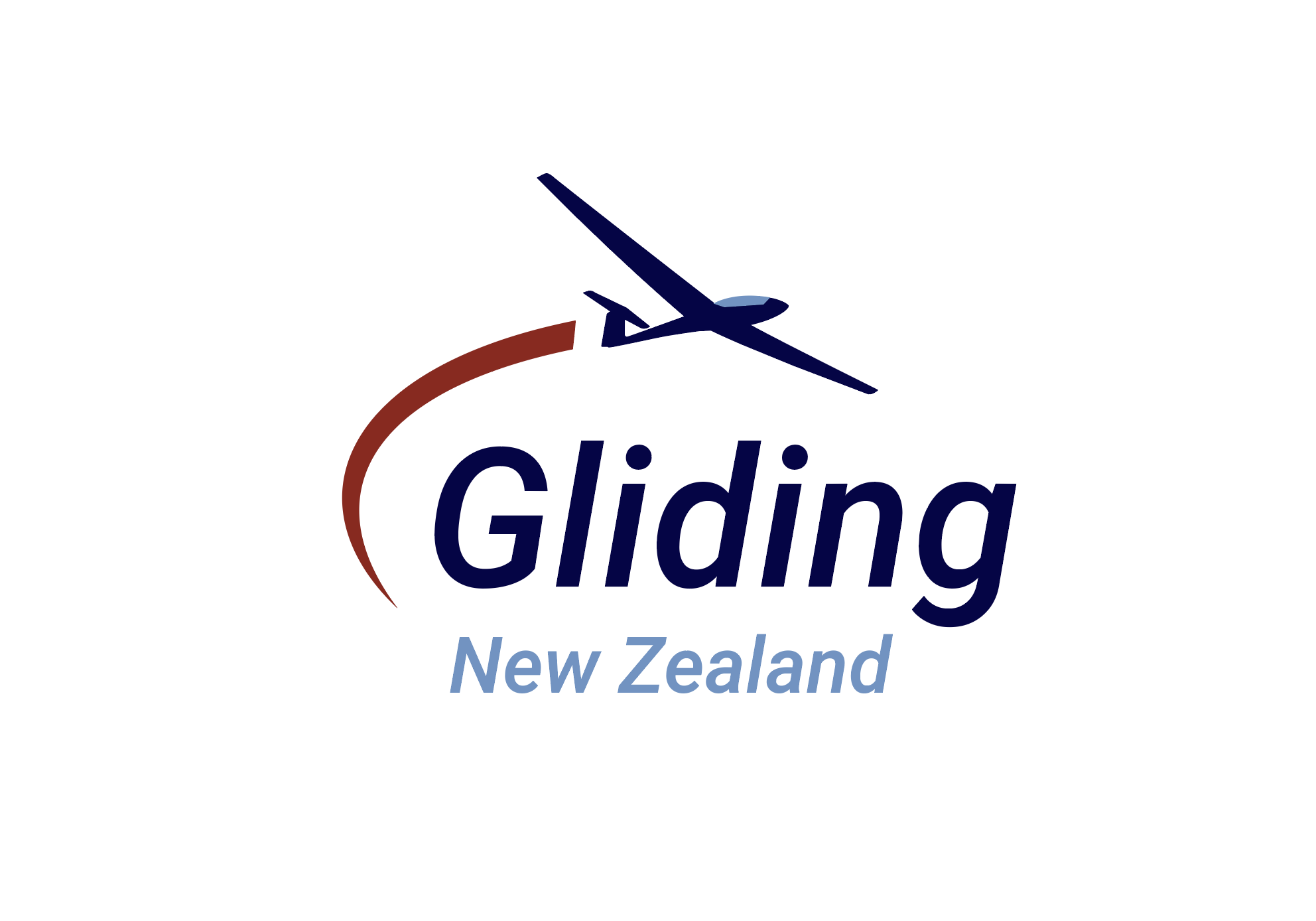
From the president

Welcome to the November GNZ newsletter.
Here we go, here we go, here we go!
We're into it. The season has fully kicked off with first solos, a cross country course, an instructors course, a youth glide mini camp and AGM, club away camps, some great cross country flights, some fun land outs and even a 1,000km flight. And that's was just October!
What will the rest of the season bring? I can't wait to find out.
Time to sell the house and buy a glider I think because as the saying goes, you can sleep under the wing of your glider but you can't fly a house.
See you up there and stay safe.
Steve Wallace
GNZ President

Congratulations
CHARLIE O'CONNELL
First solo. Well done Charlie!

NICK OAKLEY
FAI 1,000Km Diploma at 168kph!
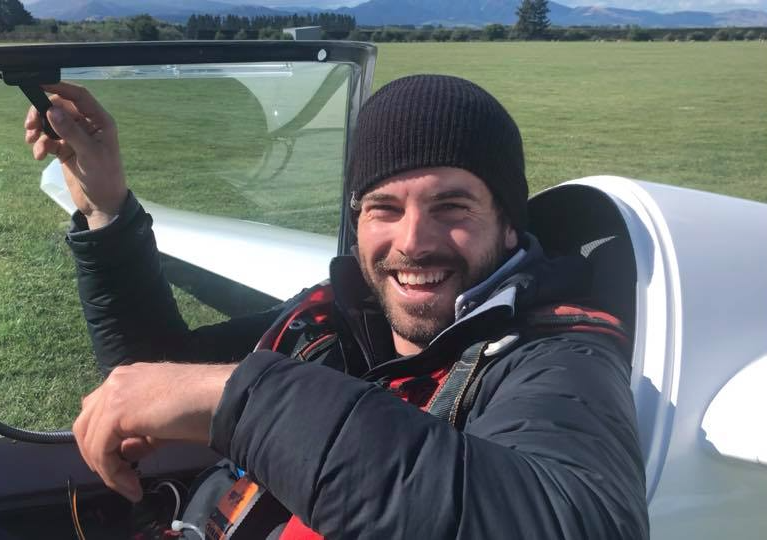
CRAIG HUNTER
Silver C qualifying flight at the MSC Cross Country Course

Instructors old and new
Aviation Sports Club's most senior (Peter Thorpe) and most junior (Izzy Burr) instructors.

ADS-B
Click on the foldable below to read the full update
Progress but a way to go yet...
ADS-B
During October GNZ (Tim Hughes and Max Stevens) met with CAA product certification management and engineers to find a pathway to enabling ADS-B for gliders. I’m delighted to report good progress was made.
The roadblocks that have been preventing gliders fitting suitable ADS-B systems have been
(a) approving suitable equipment (small, light+weight, low power consumption)
(b) getting ‘approved technical data’ (ATD) allowing engineers to install ADS-B in your aircraft
At present there is no legal pathway to approving the equipment most suited to gliders (TRIG TT21 or TT22 transponder combined with TRIG TN72 GPS receiver) because the TN72 is not certified to the IFR standard (TSO-C145) that is currently required.
To allow this equipment to be used, CAA are in the process of changing their ‘notice of technical requirement’ to allow them to approve non-TSO equipment. The updated notice is expected to be published before the end of the year. GNZ responded to the consultation for the notice, and will continue to petition CAA about it if there are concerns remaining once it is published.
Following that, CAA plan to determine the performance required of any non-TSO equipment. Provided that the equipment we have in mind meets these CAA requirements (and we expect it will), the way will then be open for us to use that gear in gliders. We anticipate that these requirements should come into force sometime during the first half of 2021.
In parallel, we are working on generating Approved Technical Data that covers ADS-B installations for gliders. This ATD will need to be accepted by CAA, and at the meeting CAA indicated that they are open to considering the ATD in parallel with the other work above, so that we are ready to go as soon as the equipment is approved for use.
Once approved, your friendly glider avionics engineer will be able to fit ADS-B OUT. The installation will then need testing and sign off by a class 3 avionics LAME.
Obviously, it will take a while to install ADS-B in the 150 or so gliders likely to need it. The above plan will work provided that the ADS-B mandate is delayed (and we have a ‘plan B’ if it isn’t). Although we cannot anticipate future decisions of the Minister of Transport, there is a growing expectation that the mandate will be delayed by at least 12 months for a number of reasons, so we are comfortable with the current plan.
CAA are administering the grant scheme for ADS-B. You can be eligible for two grants:
(1) $2500+GST when you have fitted a conforming ADS-B OUT system (transponder and position source)
(2) $500+GST when you have fitted ADS-B IN (receiver and display).
ADS-B OUT is a transponder system that tells everyone else where you are. It will be required in transponder mandatory controlled airspace, and useful everywhere.

ADS-B IN is a receiver system that lets you see where everyone else is.

Although we still have to wait a bit before installing ADS-B OUT, there is nothing stopping you from fitting ADS-B IN now. ADS-B IN involves an ADS-B receiver, and some method of displaying ADS-B traffic in the cockpit. There are a number of ways of doing this. If you have a flarm display, there are a variety of ways to add ADS-B traffic to your flarm situation display. When you have fitted one, apply for the ADS-B IN grant to offset your costs. (Although you can start now, there are new products in the wings you may wish to wait for – talk to your friendly supplier or sources).
ADS-B IN is highly recommended, as it will display nearby non-glider traffic as an aid to your visual scan. Other traffic is not normally on the glider frequency, so this can be a real benefit in uncontrolled airspace, as well as an advantage in controlled airspace. You will see commercial air transport aircraft, and any GA aircraft / helicopters / paragliders fitted with ADS-B OUT, at quite some range depending on the quality of your ADS-B IN antenna.
If you want to learn more about ADS-B, the CAA is running a series of webinars this month, using a virtual platform. There will be global perspectives from the US and Australia on lessons learned from their ADS-B transitions, best practice guidance for operators in New Zealand for its ADS-B transition, plus an ADS-B Grant Scheme update and Q&A.
- 03 Nov: Tues 11am – 12.30pm: Dan Hicok (FAA, Director, Surveillance Services)
o US Equip 2020 – What the FAA and industry achieved together – what they learnt and what benefits they've realised.
- 04 Nov: Weds 7pm – 8pm: Andrew Andersen (IAOPA Vice President, Pacific Region)
o Australia’s ADS-B Transition (participant’s perspective on the benefits)
- 05 Nov: Thurs 7pm – 8pm : Tom Gormley (CAA ADS-B Grant Scheme Technical Advisor)
o New Zealand: ADS-B Best Practice for all and ADS-B Grant Scheme update and Q&A
To register your interest and receive an invite to these Microsoft Teams events email lorcan.byrne@caa.govt.nz or click HERE (https://www.emailmeform.com/builder/form/45i5WjM9cL7dJmz0n4) to register. Please do include any questions on New Zealand’s ADS-B transition that you would like to have considered for discussion.
A note from Ross Gaddes at Sailplane Services - Another ADS-B IN option
LXNav have promised to make a unit that combines the data streams for ADS-B IN and FLARM and mixes them so they can be displayed on a FLARM compatible display.
LXNav expect production before the years end.
This is good news as the other options are to upgrade to PowerFlarm types with ADS-B IN configured ($2000 or more), or to have a separate display for FLARM and ADS-B IN traffic.
Be wary of buying older TRX units on sale on web based shops as some run older old 2014 software that conflicts with the new Windows 10 meaning they won't work as they should and the $$ you thought you saved will be wasted.
The Competition Season is Underway
Don't forget competitions are not just for competition pilots. By attending a competition even if you are not flying, you can learn an awful lot and make a valuable contribution. You can attend briefings, sit in on task setting and weather discussions, help prepare gliders, help on the grid, help run wings and ropes at launch time, go on retrieves which are always an adventure and go flying yourself post the launch as their is normally a trainer and instructor floating around and there is certainly plenty of tow planes to choose from. If you are lucky you may even score a spare seat in a competition twin.
First comp of the season kicks off toady (November 1st). You can follow all the action from the Central Plateau Soaring Contest at Taupo by checking out the pilots, tasks and results by going to Soaring Spot and you can follow the flying live by going to https://gliding.net.nz/tracking
From Tim Bromhead regards tracking system.
A useful tweak to the tracking system tonight - you can now display airspace. Turn it on in the settings (cog top left). Note it includes contest airspace, just in time for the competitions coming up. And well done Pat on a cool flight from Drury to Murupara, and return via Hamilton.

Northern Region Championships
28th November - 5th December
Open, Racing, Novice
It doesn't matter if you are an old, salty, sea dog expert or a fresh faced novice. The Northern Regionals will have tasks that suit you. Catering for all levels of experience and competitiveness.
Great food, great company, great flying, great fun!
Early bird entries close at the end of this month so don't delay, enter now and save some money.
You need to be booking now for these events in the South!

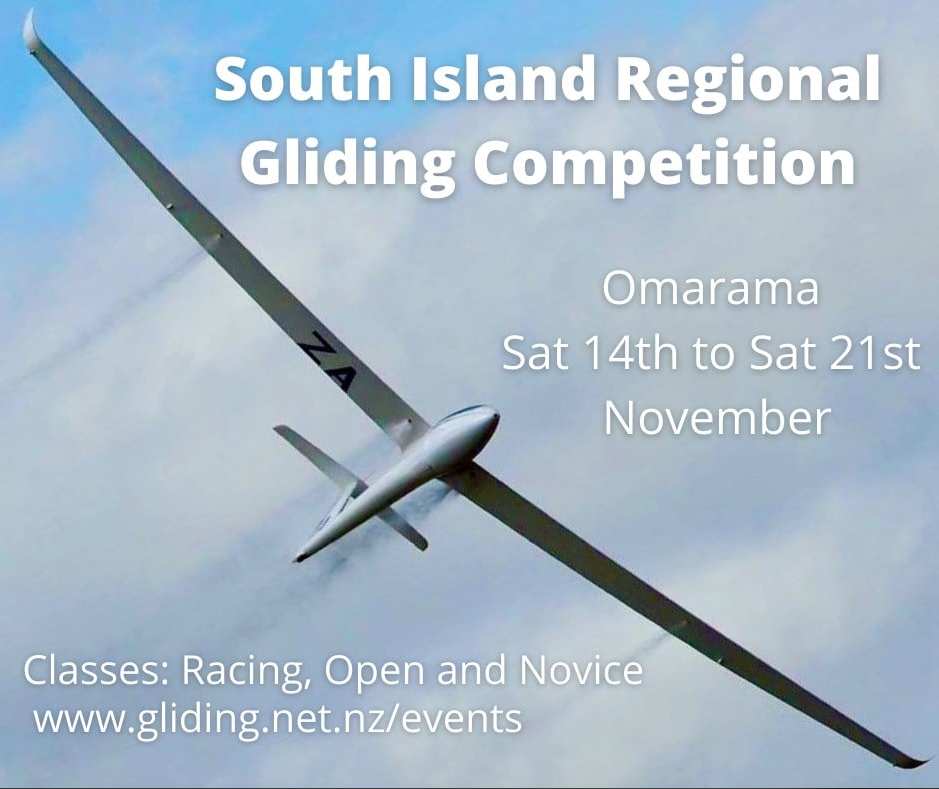
Springfield Soaring Champs
28th November - 5th December 2020
Hospitality, Fun, Entertainment, Mentoring
The Springfield Soaring Champs is focused on hospitality, fun, entertainment and mentoring. Lots to do and learn. It’s the unique Enterprise style of competition, set within Canterbury’s easy access to exceptional mountain soaring. Most meals can be had on site and there is camping and bunkroom accommodation.
- Enterprise is the perfect way for less experienced pilots to start racing gliders and yet challenging for advanced pilots.
- Enterprise encourages personal bests.
- Enterprise is where the winner has done the most flying, not the least.
- Enterprise works for a wider range of pilot experience and glider handicaps.
- Enterprise is not an FAI style with prestart delays and enroute gaggles.
- Enterprise events are competitive and also fun to compete in.
- Enterprise allows for ‘novel’ interpretation of the rules – normally called cheating.
Enterprise events are FUN and as a general guideline, tasks will be set to make the most of the day's (safe) flying potential, taking into account the variety of pilot ability and glider performance. This may involve the use of ridge and wave lift, as well as thermal soaring. Water Ballast is not allowed.
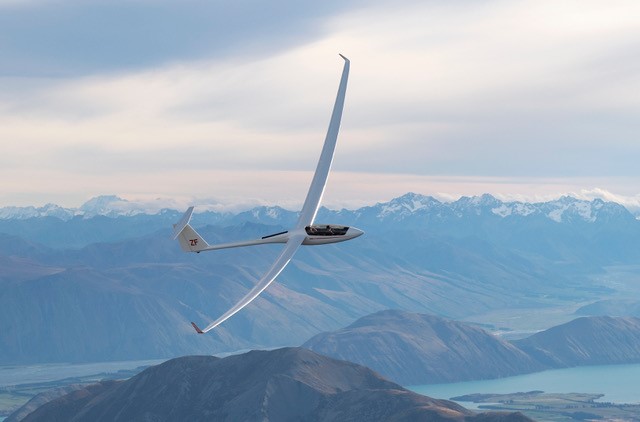
GNZ Flight Training Programme
http://training.gliding.co.nz/
New System Roll Out
13 clubs have now received the roll out training.
Have you booked yet?
Supporting material is being given out (see pic below) for use by those students that are transitioning to the new programme. A great chance to learn all about the new system and get your many questions answered.
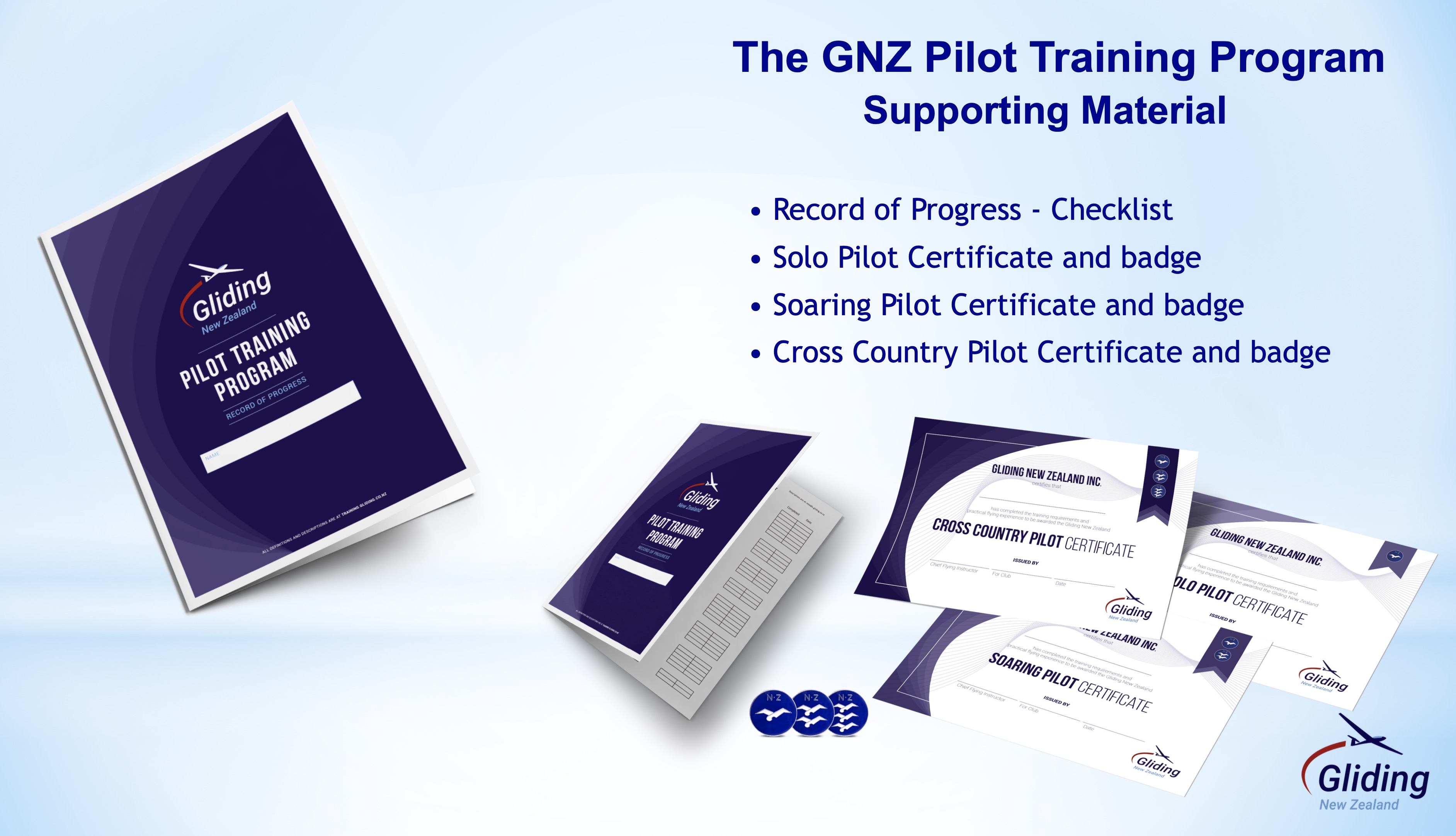
A bit of coordination is needed (the team can't be everywhere at once) but if you would like to book one of these presentations please contact Brian Sharpe via email.
bwsharpe@xtra.co.nz
FAQ's
ONLINE TRAINING PROGRAMME FAQ's
As pilots spot mistakes, opportunities for improvement or areas of concern, these are either being dealt with by the Ops Team as they come in or are being held over in anticipation of the appointment of a Change Request Review Panel. The ability for constant improvement is one of the key features of the new system.
The training programme is a controlled document so any suggestions for improvement must be made in accordance with AC 2-01 (4a and b). A change request form is now available for use with requests for change to any GNZ document. Link below.
Did you know
Less people have done FAI 1,000km diplomas than have climbed Everest and the Canterbury gliding club have more 1,000km diplomas than any other club in the world.
Maybe it is something to do with the rewards you get post flight.

Did you know
That these youth are the future of our sport. Good to know we are in safe hands.
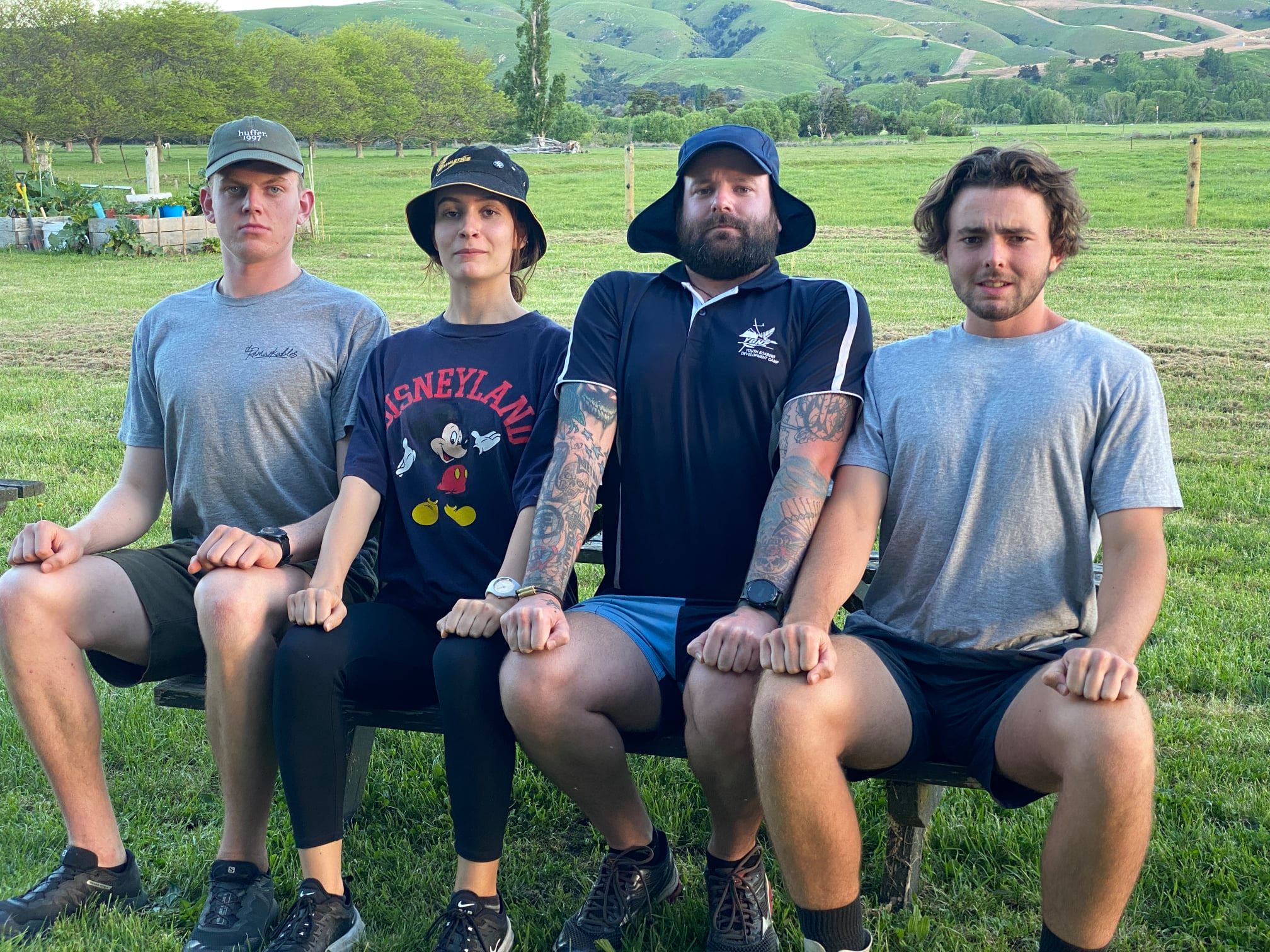
On a more serious note
Well done to the Wellington Gliding Club and the 17 youth who participated in yet another highly successful Youth Glide mini camp.


MSC X-Country Course
Well done to the Matamata Soaring Centre for holding another highly successful cross country course where many firsts and great achievements were made by the pilots involved.
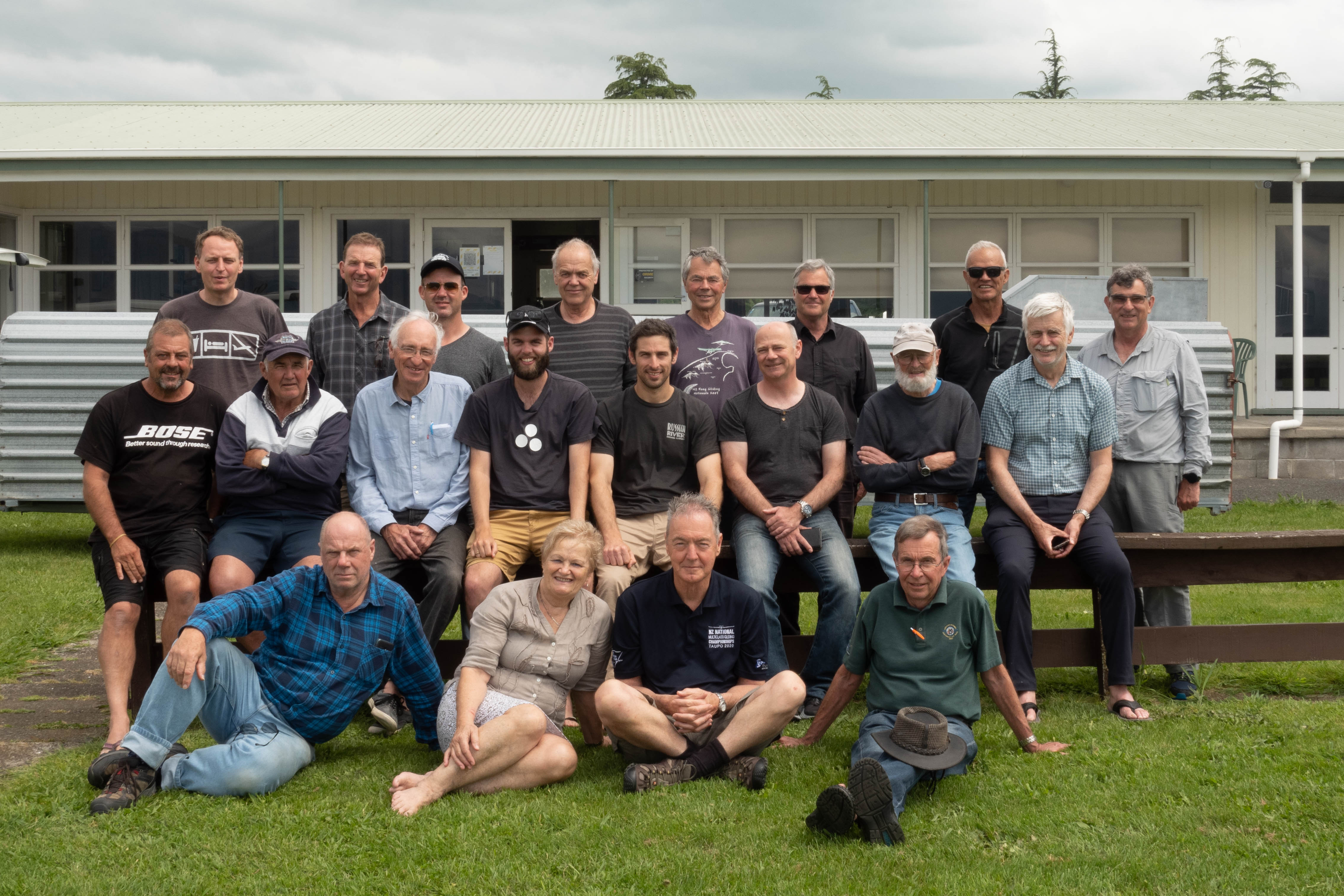
Incident Reports
From the desk of the NOO (National Operations Officer)
That Video
While the incident of the inadvertent entry into cloud by a glider on a training flight was reported in this section last month, the video that is circulating on the internet is clearly far more impactful than a few words on a page. It's just a shame the video leaked out before the Ops Team had a chance to attain permission from the video owner to create an appropriate fully informed training resource.
This work is underway and we all look forward to the release and incorporation into the training programme of the 'official' version. In the meantime please remember all incidents and accidents are opportunities for others to learn from but only if they get reported. Links to the GNZ OPS 10 incident report form below. Accidents must be reported by phoning 0508 ACCIDENT (0508 22 433)

OPS 10 link: http://gliding.co.nz/wp-content/uploads/2019/06/OPS10v7f.pdf
Thanks for reading
All contributions, pics, videos and opinions welcome
EMAIL: steve@korcreative.nz